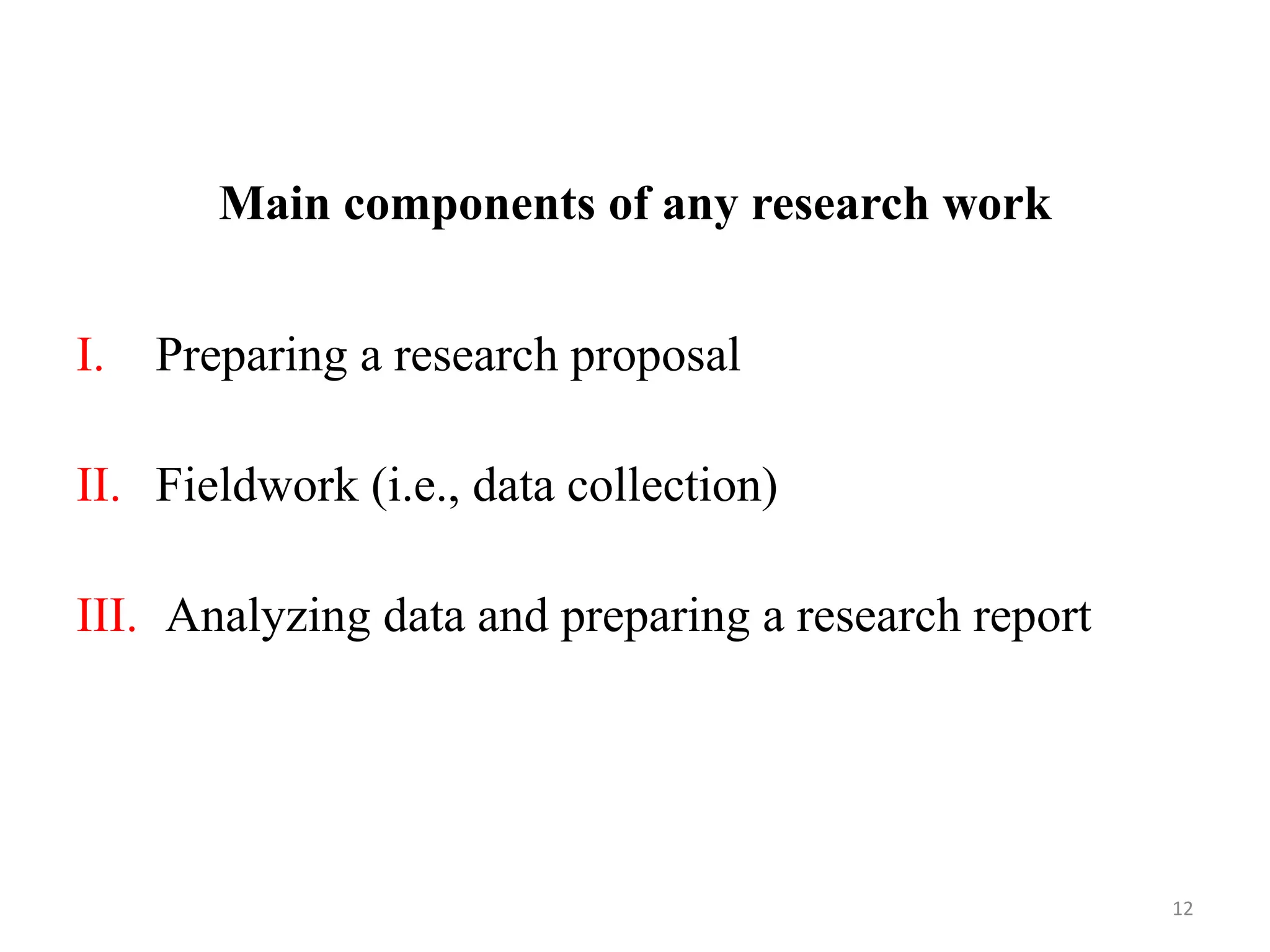Research methodology involves developing clear objectives to guide the research process. Objectives can be general, providing an overall aim, or specific, outlining measurable steps. Developing objectives involves reviewing literature to identify gaps addressed by the research. Good objectives are specific, measurable, achievable, relevant and time-bound. This helps ensure the research gathers appropriate evidence to answer the research question and address the problem.












































































